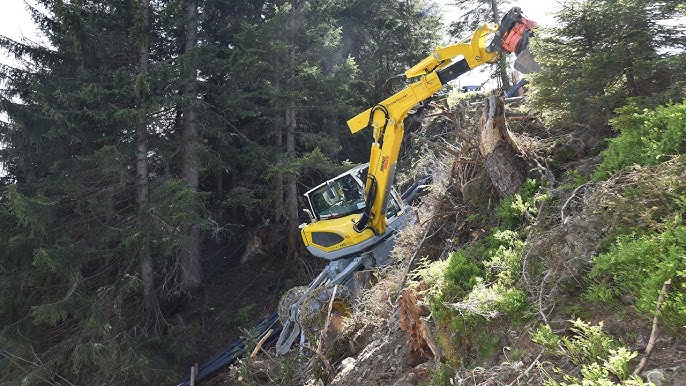
7 Facts You Need To Know About Spider Excavators
Spider excavators, also known as walking excavators, are gaining popularity for their unique capabilities and innovative design. Here are some fascinating facts about these extraordinary machines:
#1 Origins in the Swiss Alps
The concept of the spider excavator was born out of necessity in the Swiss Alps. In 1966, the swiss inventor Ernst Menzi designed the world's first ever walking excavator. to handle the slopes and treacherous terrains that conventional machines couldn't manage. The original model, the Menzi Muck 2500, was named in part after the fairytale character Little Muck, emphasizing its ability to achieve great tasks despite its unusual appearance.
#2 Versatility in Handling Difficult Terrain
Spider excavators have a unique ability to operate on difficult and hard-to-access terrains. They can handle slopes up to 60 degrees and work efficiently on mud, snow, rocks, and even water up to five feet deep. This makes them indispensable for tasks in limited-access regions such as power line maintenance, right-of-way clearing, and slope stabilization.
#3 Independent Operating Legs
These excavators stand out due to their four independently operating legs, which allow them to mimic a spider's movements. With hydraulic cylinders enabling the legs to adapt to various terrains, they can move in a spider-like fashion, overcoming obstacles with minimal environmental impact. This maneuverability provides superior lifting and ripping forces, often exceeding those of conventional tracked excavators.
#4 Multiple Models
Spider excavators come in various sizes and models, each tailored to different types of work. For example, the Menzi Muck A20 has a smaller cab and two-wheel drive, while the Muck M545X offers four-wheel drive, special stabilizers, and a top speed of nearly 10 miles per hour thanks to a 140-hp Deutz diesel engine. Kaiser’s S12 Allroad is another notable model, boasting a formidable 187 hp and an impressive fording depth of eight feet.
#5 Special Attachments
These machines' versatility extends to the range of attachments they can accommodate. From grapple hooks for moving concrete tubes to hydraulically powered hammers for demolition, spider excavators can be equipped for a variety of specialized tasks. This adaptability makes them some of the most versatile machinery in construction and maintenance.
#6 Cost and Hire Rates
Spider excavators are available for hire in different sizes, with rates suited to various budgets. For instance, small spider excavators (up to 5 tonnes) can be hired for $350-$500 per day for dry hire, and $500-$650 for wet hire. Larger models (over 10 tonnes) range from $700-$900 per day for dry hire, and $900-$1,050 for wet hire.
#7 A Visual Spectacle
The sight of a spider excavator in action is both mesmerizing and somewhat eerie. Their ability to scale steep hillsides and navigate complex terrains often leaves onlookers amazed and slightly unnerved. Videos of these machines, like the Menzi Muck M545X, performing at demo events have captivated audiences worldwide.
In summary, spider excavators are extraordinary machines designed to tackle the most challenging terrains and tasks. Their origins, unique design, and versatile functionality make them a fascinating subject in the world of heavy machinery. Whether it's for construction, maintenance, or specialized tasks, spider excavators continue to revolutionize how we approach and conquer difficult terrains.